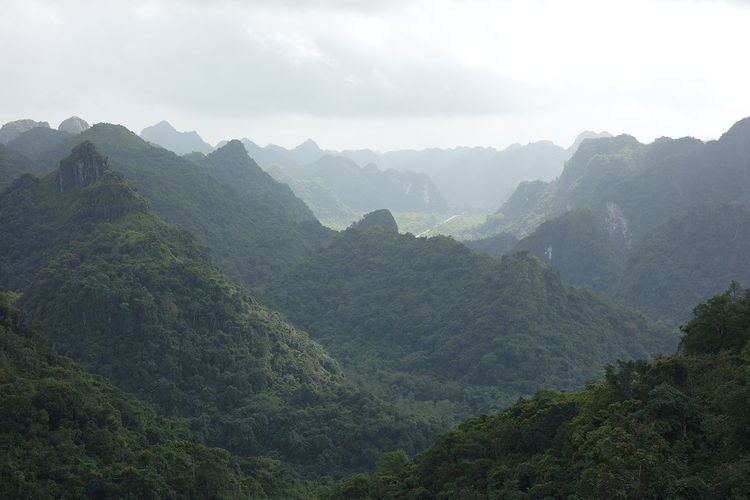Area 152 km² Established 1986 | Nearest city Hai Phong Phone +84 31 3688 981 | |
 | ||
Address Đường xuyên đảo Cát Bà, tt. Cát Bà, Cát Hải, Hải Phòng, Vietnam Similar Cannon Fort, Hospital Cave, Ha Long Bay, Cúc Phương National, Tuần Châu | ||
C t b national park
Cát Bà National Park is a World Heritage Site designated as a biosphere reserve in northern Vietnam. The park is part of Cát Bà Island in Hạ Long Bay and is administered by the city of Haiphong. The park is located approximately 30 kilometres (19 mi) east of Hai Phong, covering about 263 square kilometres (102 sq mi) and comprising 173 square kilometres (67 sq mi) of land and 90 square kilometres (35 sq mi) of inshore water.
Contents
The Cát Bà langur, also known as the white-headed langur (Trachypithecus poliocephalus) is resident within the park and is classified by the International Union for Conservation of Nature as a critically endangered primate; one of the rarest in the world.
History
Cát Bà National Park was established on 31 March 1986 under No.79/CP decision of the Council of Ministers of Vietnam (now the government). The park has been a popular tourist destination, since the mid-1990s with wealthy Chinese and Vietnamese tourists. The tourists created a demand for traditional medicine and development and logging led to the near extinction of the white-headed langur with numbers falling from 2600 to just 40 in 2003. In 2016 there are 67 (± 5).
Geography
Cát Bà National Park is situated off the north-east shore of Viet-nam and covers most of Cát Bà island; the park headquarters are at Trung Trang. The island is mainly limestone with alternating narrow valleys running north-east to south-west. There are many rugged hills with elevation to 500 metres (1,600 ft); most are in the range 50–200 metres (160–660 ft).
The geographic coordinates are:
20 ° 43'50 "-20 ° 51'29" north latitude.106 ° 58'20 "-107 ° 10'50" east.There are five main soil groups:
The area of the park is 16,196.8 hectares (40,023 acres), of which 10,931.7 hectares (27,013 acres) is forest and 5,265.1 hectares (13,010 acres) of sea. Forest includes primary, secondary and mangrove.
